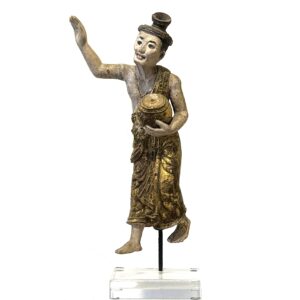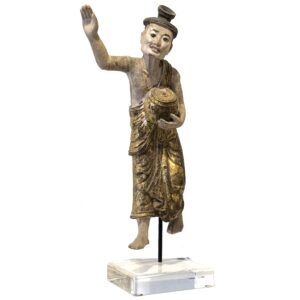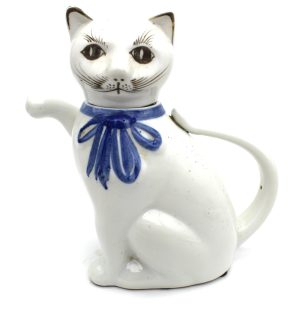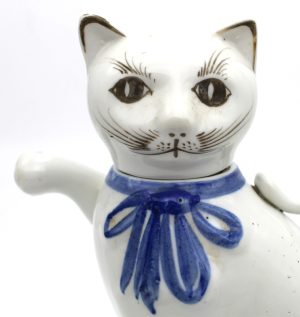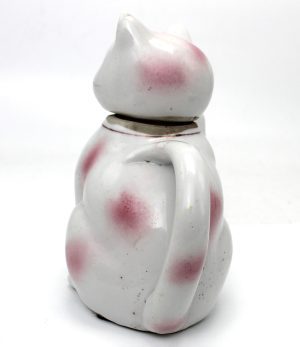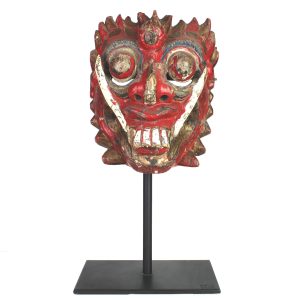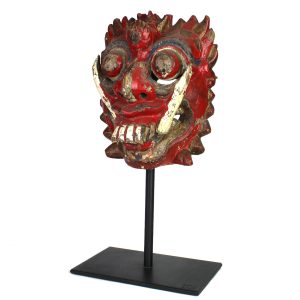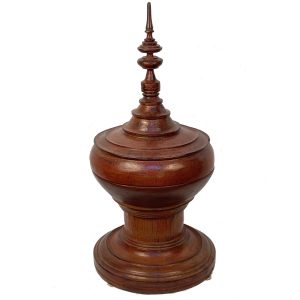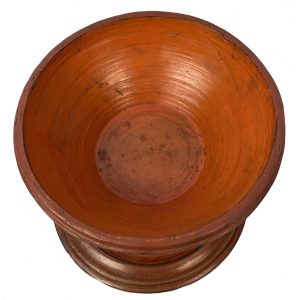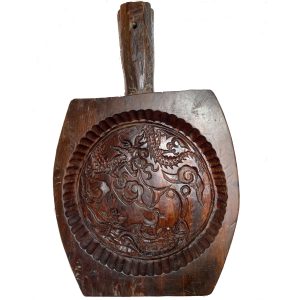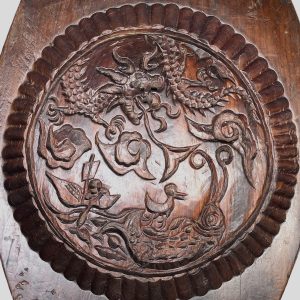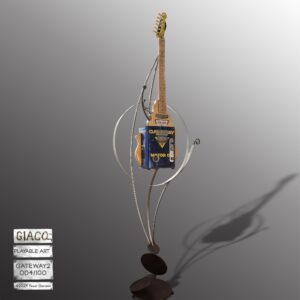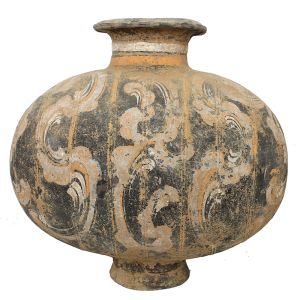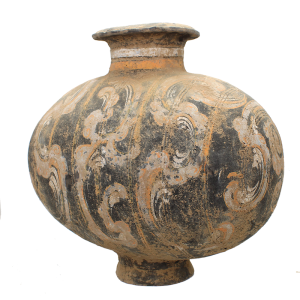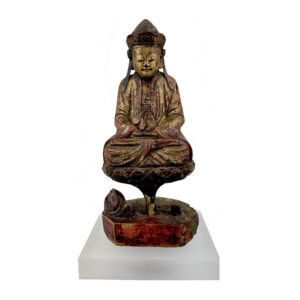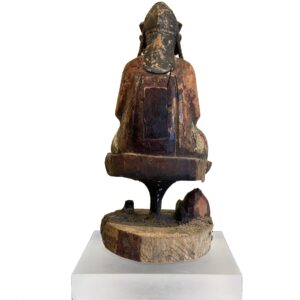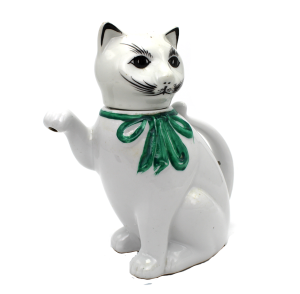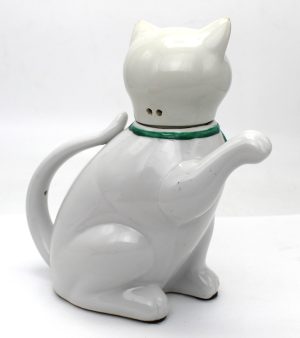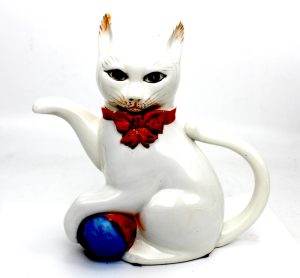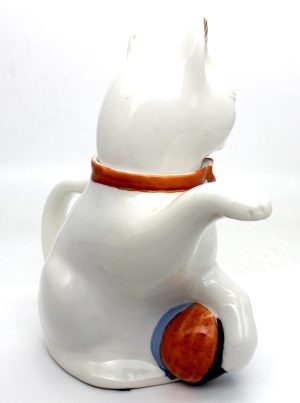Showing 85–96 of 164 results
-
Sale!


$1,175.00 Original price was: $1,175.00.$975.00Current price is: $975.00.
H: 22″ W: 8.5″ D: 6.5″ | CALL 213-568-3030 OR EMAIL [email protected] FOR SHIPPING.
Lyrical wood provincial Burmese male dancer with drum in gilded Burmese sarong with glass and sequins. Set high on a transparent Lucite base, he appears to float in motion.
-
Sale!


$145.00 Original price was: $145.00.$125.00Current price is: $125.00.
H: 7” W: 7” D: 3.5” | FREE SHIPPING IN CONTINENTAL US
Porcelain cat teapot removable head, sinuous tail handle. Beautifully hand-painted whimsical ribbon-like blue collar, dangling ornamental bow, and the black accents. Likely Qing Dynasty circa 1900-1920.
-
Sale!


$135.00 Original price was: $135.00.$115.00Current price is: $115.00.
H: 5.5″ W: 3″ D: 3.375″ | FREE SHIPPING WITHIN CONTINENTAL U.S.
Antique porcelain teapot, removable head, tail handle, and spout paw. Hand painted design with ribbon-like gold collar and dangling ornamental bow symbolizing long life. Great gift, recommended for decorative use only.
-
Sale!


$975.00 Original price was: $975.00.$775.00Current price is: $775.00.
H: 8.26″ W: 7.25″ D: 6″ | CALL 213-568-3030 OR EMAIL [email protected] FOR SHIPPING
Dance mask of Rangda, sacred Balinese demon-queen with 2 upper and lower fangs, scary teeth, jagged facial elements, menacing eyes, deep red. Featured in Spiderman 2002 movie on museum quality metal stand.
-
Sale!


$725.00 Original price was: $725.00.$525.00Current price is: $525.00.
H: 26″ Dia: 12.5″|CALL 213-568-3030 OR EMAIL [email protected] for shipping.
This elegant early 20th century red lacquer hsun-ok has a simple striking silhouette with raised circular layers on a pedestal base and woven vertical bands topped by a tall round finial resembling a Buddhist stupa.
-
Sale!


$425.00 Original price was: $425.00.$225.00Current price is: $225.00.
H: 16.5″ W: 10.5″ D: 2.25″ CALL 213-568-3030 OR EMAIL [email protected] FOR SHIPPING QUOTE
This finely detailed hardwood mold was used to make sweetmeats confections, perhaps mooncakes for the Chinese Autumn Moon Festival. It is covered with deeply carved propitious symbols for marital harmony, sons and successful endeavors: a four clawed dragon for fertility, two ducks symbolizing marital bliss and harmony, one atop a carp for conjugal bliss and achieving noble rank and a boat with a sail for making all this easy sailing. This would be a great accessory or gift (especially for weddings) to spice up any kitchen.
-


$12,500.00
H: 75″ W: 27″ D: 12″ | CALL 213-568-3030 OR EMAIL [email protected] FOR SHIPPING COST
The creation of renowned French-American multimedia artist and sculptor Pascal Giacomini, Giaco GuitarTM Sculptures are uniquely playable works of art highly prized for both their musical and artistic merits. Technically, they are hybrid oil-can, solid body electric guitars.
This Capitol Guitar sculpture is made from a medium two-gallon can from the Atlantic Refining Co. in Philadelphia, which became part of John D. Rockefeller’s Standard Oil until it closed in 2019. This is item number 7 out of an eventual collection of 100 Giaco Guitars™ made by the artist. Each item in the collection is a one-of-a-kind, impossible to reproduce creation.
Specs for this Guitar Sculpture include:
- Honduras Mahogany wood resonating chamber assembled under pressure (a signature Giacomini invention)
- Custom shop Telecaster neck
- Lindy Fralin pickups
- Gabriel Tenorio Strings
- Fender Custom Shop neck
- Hipshot Grip-Lock tuners
- Modified Telecaster gear
- Guitar is plek’d (expertly aligned for optimum playability)
Testimonial:
“The guitar is comfortable at high velocity and gives you freedom to experiment. Major tone. You feel the vibration in your body stronger and different than an acoustic guitar. Unusual low bar access. A different ergonomic allows for an extended finger picking. An electric guitar that you can play sitting down.”
–Denys Marco, Musician
-


$12,500.00
H: 75″ W: 27″ D: 12″ | CALL 213-568-3030 OR EMAIL [email protected] FOR SHIPPING COST
The creation of renowned French-American multimedia artist and sculptor Pascal Giacomini, Giaco GuitarTM Sculptures are uniquely playable works of art highly prized for both their musical and artistic merits. Technically, they are hybrid oil-can, solid body electric guitars.
This custom-made “Gateway” guitar features the iconic dark blue and yellow colored oil can of Gateway Motor Oil, a notable American oil company from the 1940s and 50s before the industry was consolidated. This is item number 4 out of an eventual collection of 100 Giaco Guitars™ made by the artist. Each item in the collection is a one-of-a-kind, impossible to reproduce creation.
Specs for this Guitar Sculpture include:
- Swamp Ash wood resonating chamber assembled under pressure (a signature Giacomini invention)
- Custom shop Telecaster neck
- Lindy Fralin pickups
- Gabriel Tenorio strings
- Hipshot Grip-Lock tuners
- Modified Telecaster gear
- Guitar is plek’d (expertly aligned for optimum playability)
Testimonial:
“Neck feels great. Great playability. Great sound. The Guitar gives you confidence to experiment. As you get past your comfortable licks and chords, you start playing things you’ve never played before. The guitar invites you to experiment and search for ideas. Guitars that enlighten your play. It’s genius that you don’t need a stand.”
– Mark Christian, Music composer, Studio musician, Songwriter
-
Sale!


$2,150.00 Original price was: $2,150.00.$1,785.00Current price is: $1,785.00.
H: 11.75” W: 12.25” CALL 213-568-3030 OR EMAIL [email protected] FOR SHIPPING.
Families placed cocoon jars with auspicious designs containing magical mixtures of mulberry leaves in tombs for departed’s souls to drink to transform in afterlife.
-
Sale!


$695.00 Original price was: $695.00.$525.00Current price is: $525.00.
H: 10″ W: 5.5″ D: 4.5″ | FREE SHIPPING WITHIN CONTINENTAL U.S.
Rare provincial consecrated carving of Nanhai Guanyin on a lotus, representing purity of the mind, above a fish symbolizing her power to help beings sail through sea of suffering separating mortal world from the Western Paradise.
-
Sale!


$145.00 Original price was: $145.00.$125.00Current price is: $125.00.
H: 6.5″ W: 6.5″ D: 3.5″ | FREE SHIPPING WITHIN CONTINENTAL U.S.
Porcelain teapot with removable head and long sinuous tail handle ,Whimsical design with green ribbon collar and dangling ornamental bow. Bottom stamp and seal date to Qing Dynasty/Chinese Republic ca 1900-1920.
-
Sale!


$145.00 Original price was: $145.00.$125.00Current price is: $125.00.
H: 8” W: 8” D: 3.75” | FREE SHIPPING IN CONTINENTAL US.
Beautifully hand-painted whimsical cat tea pot with red collar ribbon, ornamental bow, and ball under left paw. Black, orange, red and blue accents on face, ears, head, paws and ball. Bottom double stamped seal.
End of content
End of content

